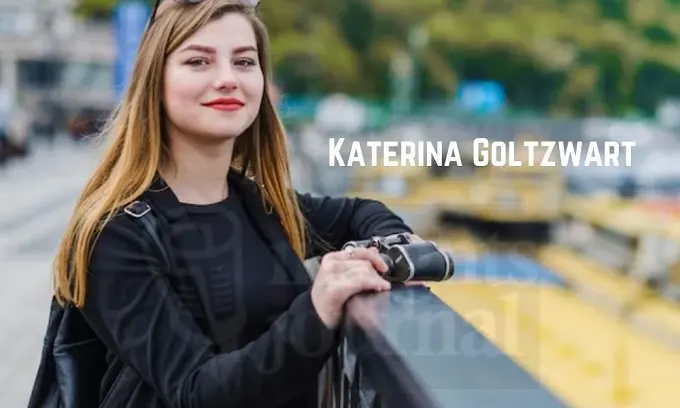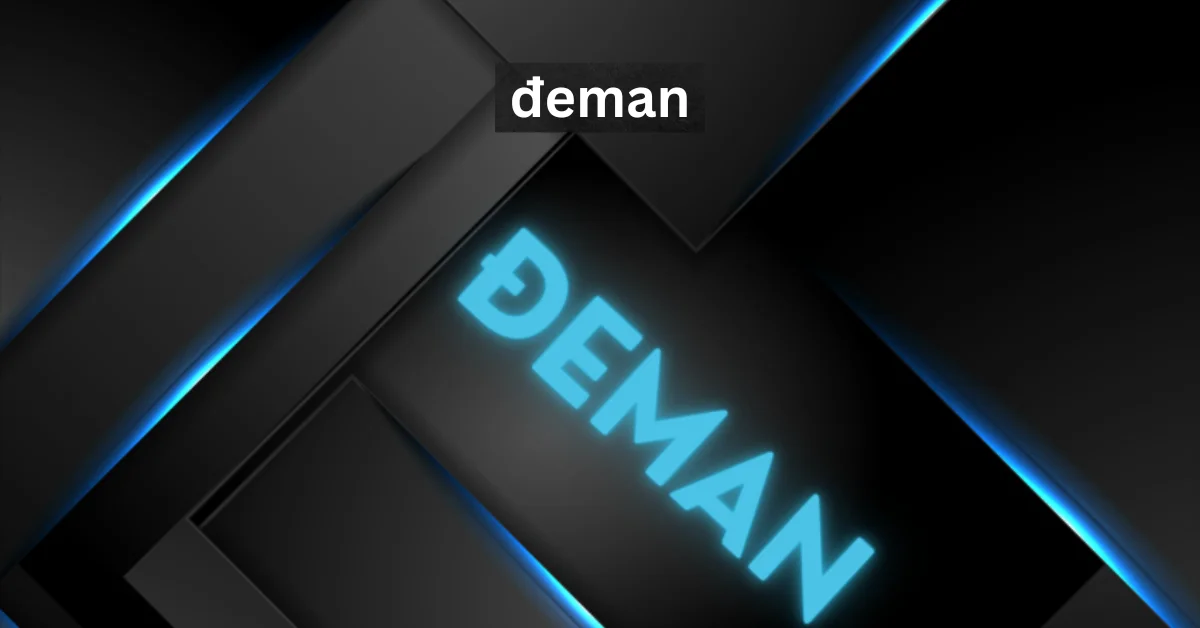Blog
Discovering the Charm of Chaleturi: A Journey into Alpine Elegance
Published
1 month agoon
By
Rocklord
Chaleturi, the term for traditional Alpine chalets, evokes images of snow-covered peaks, cozy wooden lodges, and the warmth of a crackling fire on a cold winter’s night. These structures are not just places to stay; they embody a lifestyle deeply connected to nature, culture, and comfort. This article explores the rich history, architectural significance, and modern-day appeal of chalets, providing an in-depth look at why they continue to be a beloved choice for travelers and homeowners alike.
Historical Background
Chalets have their roots in the Alpine regions of Switzerland, France, and Austria. The word “chalet” originates from the Latin “calitum,” meaning “shelter.” Traditionally, these buildings served a dual purpose: as a home for farmers and a seasonal retreat for those seeking the tranquility of the mountains. The design of chalets evolved to accommodate the harsh Alpine climate, with features that provided both insulation and aesthetic appeal.
Historically, chalets were constructed using local materials, primarily wood and stone, reflecting the natural surroundings. Their construction techniques were passed down through generations, creating a unique architectural style that blends seamlessly with the landscape. As tourism in the Alps grew in the 19th century, chalets transformed from utilitarian structures into luxurious lodgings, paving the way for modern interpretations that continue to attract visitors.
Architectural Features
Design and Structure
The quintessential chalet is characterized by its distinctive sloping roof, wide eaves, and wooden balconies adorned with intricate carvings. This design is not only aesthetically pleasing but also functional, as the steep roof prevents heavy snowfall from accumulating and collapsing the structure.
Chalets often feature large windows that provide panoramic views of the stunning Alpine scenery. The use of natural materials, such as timber and stone, ensures that the chalet harmonizes with its surroundings, creating a rustic yet elegant ambiance. Interiors are typically cozy, with exposed wooden beams, warm color palettes, and traditional furnishings that enhance the sense of comfort.
Sustainability
In recent years, the emphasis on sustainability has led to a resurgence in the popularity of traditional chalet construction methods. Many modern chalets incorporate eco-friendly materials and technologies, such as solar panels, energy-efficient heating systems, and rainwater harvesting. This commitment to sustainability not only reduces the ecological footprint but also resonates with the growing number of environmentally-conscious travelers.
The Allure of Chalets in the Modern Era
Vacation Destinations
Chalets have become synonymous with luxury and relaxation, making them prime vacation destinations. Whether nestled in the heart of the Swiss Alps or perched on the slopes of a French ski resort, chalets offer an escape from the hustle and bustle of urban life.
Travelers are drawn to chalets for their unique blend of comfort and adventure. Many chalets provide direct access to skiing, hiking, and other outdoor activities, allowing guests to immerse themselves in nature. The appeal of a cozy retreat after a day of outdoor exploration cannot be overstated; there’s nothing quite like sipping hot cocoa by the fire after a day on the slopes.
Culinary Delights
Chalet vacations often come with the added benefit of exceptional dining experiences. Many chalets employ skilled chefs who prepare gourmet meals using locally sourced ingredients. Traditional Alpine cuisine, including fondue, raclette, and hearty stews, delights guests and offers a taste of the region’s culinary heritage.
Additionally, the social aspect of dining in a chalet adds to its charm. Gathered around a long wooden table, friends and family share stories and laughter, creating memories that last a lifetime. The intimate setting fosters a sense of community, making every meal an occasion to remember.
The Cultural Significance of Chalets
Chalets are not just architectural marvels; they also play a vital role in the cultural identity of the Alpine regions. They reflect a lifestyle deeply rooted in nature and tradition, where community and family values are paramount.
Festivals and Traditions
Throughout the year, various festivals celebrate the rich heritage of the Alps, with chalets often serving as focal points for these events. From winter markets featuring handmade crafts to summer festivals showcasing local music and dance, chalets provide a backdrop for cultural celebrations that bring communities together.
Artisan Craftsmanship
The craftsmanship involved in building and decorating chalets is also a reflection of local culture. Artisans skilled in wood carving, textile design, and stone masonry create unique features that tell stories of the region’s history and traditions. These handmade elements add character to each chalet, ensuring that no two are alike.
Challenges and Preservation Efforts
Despite their enduring appeal, chalets face challenges in the modern world. Urbanization, climate change, and the pressures of tourism can threaten their existence and authenticity. Many traditional chalets have been replaced by modern developments, leading to concerns about the loss of cultural heritage.
To combat these challenges, various preservation efforts are underway. Organizations dedicated to protecting traditional Alpine architecture advocate for sustainable tourism practices and the restoration of historic chalets. These initiatives aim to strike a balance between modern demands and the need to preserve the unique charm of these iconic structures.
Building Your Own Chalet
For those inspired by the allure of chalets, the dream of building a personal retreat is more attainable than ever. With advancements in technology and sustainable building practices, creating a modern chalet can be both an exciting and responsible endeavor.
Choosing the Right Location
When considering building a chalet, location is paramount. Factors such as proximity to outdoor activities, breathtaking views, and access to local amenities should guide your decision. Whether you prefer the snowy peaks of the Alps or the tranquil forests of the Jura Mountains, the right setting will enhance your chalet experience.
Design Considerations
Designing a chalet involves careful consideration of aesthetics, functionality, and sustainability. Collaborating with architects and builders who specialize in Alpine construction can help ensure that your vision aligns with local building codes and traditions.
Incorporating elements such as open floor plans, large windows, and outdoor living spaces can create a seamless connection between indoor comfort and the stunning natural surroundings. Additionally, selecting eco-friendly materials and energy-efficient systems will not only reduce your environmental impact but also contribute to the long-term sustainability of your chalet.
Conclusion
Chaleturi represent more than just a style of architecture; they embody a lifestyle steeped in tradition, nature, and comfort. Their rich history, architectural beauty, and cultural significance make them a beloved choice for travelers and homeowners alike. As we navigate the challenges of the modern world, the charm of chalets serves as a reminder of the enduring connection between people and the environment.
Whether you seek adventure in the mountains, a cozy retreat from the world, or a place to create lasting memories with loved ones, a chalet offers all of that and more. As you consider your next getaway or dream of building your own alpine haven, remember the allure of chaleturi and the magic they bring to life in the heart of the Alps.
4o mini
You may like
Blog
Katerina Goltzwart: Pioneer of Modern Psychology and Mental Health Advocacy
Published
1 week agoon
November 13, 2024By
Rocklord
Katerina Goltzwart is widely regarded as one of the most influential figures in contemporary psychology and mental health advocacy. With her innovative research, extensive publications, and dedication to understanding human behavior, she has helped to reshape the field of psychology, introducing methods and insights that have impacted mental health treatment and improved the lives of countless individuals worldwide. This article explores her contributions, examining her journey, research findings, and the long-lasting impact she has had on the mental health landscape.
Early Life and Educational Background
Born in the early 1970s in Berlin, Germany, Katerina Goltzwart demonstrated an interest in human behavior from a young age. Her inquisitive nature led her to question and explore human thought processes, social interactions, and individual development. Growing up in a city steeped in history and shaped by the events of the Cold War, she developed a keen awareness of social and political dynamics, which fueled her desire to understand how external factors influence mental health.
Goltzwart pursued her undergraduate degree in Psychology at the University of Heidelberg, one of Germany’s oldest and most prestigious institutions. After completing her bachelor’s degree, she attended the University of Cambridge for her postgraduate studies, where she specialized in clinical psychology. This academic foundation, combined with her multicultural background, prepared her to work across borders and become a global leader in the field.
The Rise of Cognitive-Behavioral Therapy and Goltzwart’s Influence
One of Goltzwart’s most impactful contributions to psychology came from her work in cognitive-behavioral therapy (CBT). While CBT was already a well-established form of treatment, Goltzwart’s research focused on its application in diverse cultural contexts. She pioneered studies examining how cultural backgrounds can affect a person’s response to CBT, emphasizing the need for culturally sensitive approaches in therapeutic settings.
Her findings revealed that adapting therapeutic methods to consider clients’ cultural and social backgrounds could lead to significantly better outcomes. This work transformed CBT from a one-size-fits-all approach into a more individualized practice, expanding its effectiveness globally. Her culturally adaptive model of CBT is now taught in major institutions worldwide, making her a foundational figure in advancing cross-cultural psychology.
Research on Trauma and Post-Traumatic Growth
Goltzwart has also made groundbreaking contributions in the areas of trauma and resilience. Her research on trauma response mechanisms and post-traumatic growth has illuminated how individuals can not only recover from traumatic events but also grow and gain strength from them. Inspired by her own experiences with hardship, Goltzwart wanted to explore how adversity could lead to personal growth.
Her studies revealed that while trauma can be debilitating, it also holds the potential for transformative change, often resulting in increased resilience, new perspectives, and personal growth. Her concept of “adaptive resilience” emphasizes that mental health practitioners should not only focus on alleviating trauma symptoms but should also encourage individuals to leverage their experiences for self-improvement. This shift in focus from mere survival to thriving after trauma has changed the way therapists approach post-traumatic treatment, emphasizing empowerment rather than simply healing.
Mental Health Advocacy and Global Outreach
Apart from her academic and clinical work, Katerina Goltzwart is also a passionate mental health advocate. Recognizing that mental health issues are often stigmatized, particularly in underrepresented communities, Goltzwart has used her platform to promote awareness, break down barriers, and reduce the stigma associated with seeking mental health treatment. She has spoken at numerous international conferences, TEDx events, and universities, spreading a message that mental health is as vital as physical health.
In collaboration with organizations like the World Health Organization (WHO) and UNICEF, Goltzwart has worked on programs aimed at making mental health care accessible to marginalized populations. She has been instrumental in establishing community-based mental health programs in various countries, particularly in regions where mental health resources are limited. Her initiatives often focus on training local caregivers, thus creating a sustainable mental health support network in underserved areas.
Contributions to Psychological Literature
Goltzwart’s prolific writing has played a crucial role in disseminating her findings to both academic and general audiences. Her published works, which include academic papers, books, and articles, cover a range of topics, from trauma and resilience to the impact of social media on mental health. Her most acclaimed book, From Struggle to Strength: A New Approach to Post-Traumatic Growth, has become a staple in psychology curricula worldwide. In it, she explains her theories on resilience and provides practical advice for both mental health practitioners and individuals facing trauma.
Goltzwart has also contributed to numerous psychology journals, where she has highlighted the importance of preventative mental health care. She argues that mental health systems should not only focus on treatment but also invest in preventive measures such as education, early intervention, and community support. Her writings have significantly influenced mental health policies in many countries, encouraging policymakers to consider preventive care as a critical aspect of mental health services.
Pioneering Digital Mental Health Solutions
Recognizing the potential of technology to make mental health care more accessible, Goltzwart has embraced digital platforms and tools to provide mental health support to a broader audience. She was one of the first psychologists to advocate for teletherapy, especially during times of crisis, such as the COVID-19 pandemic. Her early adoption and promotion of online therapy have helped normalize teletherapy as a legitimate and effective way to deliver mental health care.
In partnership with tech companies, Goltzwart has also been involved in the development of mental health applications that use artificial intelligence to offer preliminary support and monitor users’ mental health. These applications use AI-driven algorithms to identify signs of anxiety, depression, and other mental health concerns, alerting users when they may need to seek professional help. By merging psychology with technology, she has created a model that allows for early intervention, helping individuals access resources before reaching a point of crisis.
Honors and Recognition
Throughout her career, Katerina Goltzwart has received numerous awards and honors in recognition of her contributions to psychology and mental health advocacy. She was awarded the prestigious Wilhelm Wundt Award for Psychology Innovation, which celebrates her pioneering work in trauma research. Additionally, she has received honors from various mental health organizations for her humanitarian work and her efforts to destigmatize mental health treatment.
Goltzwart is also a fellow of the American Psychological Association and the European Federation of Psychologists’ Associations. Her membership in these esteemed organizations speaks to her influence within the global psychology community. In 2020, she was invited to serve on the United Nations Mental Health Task Force, where she advises on policies and programs aimed at improving global mental health access.
Katerina Goltzwart’s Legacy
Katerina Goltzwart’s contributions to psychology and mental health have left a lasting legacy. By integrating culturally adaptive techniques into CBT, advancing the concept of post-traumatic growth, and leading mental health advocacy initiatives worldwide, she has reshaped the mental health field. Her commitment to expanding access to mental health resources, particularly for marginalized communities, has paved the way for a more inclusive approach to mental health care.
Furthermore, her advocacy for digital mental health solutions has brought mental health support into the 21st century, demonstrating that technology can be a valuable tool for promoting mental well-being. Her work has not only improved the lives of those she has directly helped but has also inspired a new generation of psychologists and mental health advocates to continue advancing mental health care for all.
Conclusion
Katerina Goltzwart’s impact on psychology is undeniable. Her research, advocacy, and writings have transformed how mental health is perceived and treated. From her pioneering work in cross-cultural CBT and trauma resilience to her influence on digital mental health solutions, Goltzwart has consistently been at the forefront of innovation. Her legacy serves as a testament to the importance of compassion, resilience, and adaptability in addressing mental health challenges, and she continues to inspire mental health professionals to approach their work with empathy, understanding, and an unwavering commitment to making a difference.
Through her tireless efforts, Katerina Goltzwart has made an indelible mark on the mental health field, and her influence will continue to shape the future of psychology for years to come.
Blog
Understanding “Đêman”: A Comprehensive Guide
Published
2 weeks agoon
November 12, 2024By
Rocklord
The term “Đêman” has started to gain attention in certain online and cultural circles, but it can be a bit ambiguous depending on the context in which it’s used. To understand this term fully, we need to explore its roots, its usage in various languages and cultures, and how it has evolved in popular discourse. In this article, we will break down the meaning of “Đêman,” its significance, and common questions surrounding it.
What is “Đêman”?
“Đêman” is a term that appears to have multiple layers of meaning depending on the context, and it might be a regional expression, an internet meme, or even a play on words. Below are the main areas where the term is most commonly used or understood.
1. Vietnamese Language Usage
In the Vietnamese language, “Đêman” (pronounced similarly to “demon” in English) can sometimes be used as a slang term to describe something extreme, something out of the ordinary, or even something intimidating. Its usage can be likened to referring to a person or an event as being “wild” or “over-the-top.” In certain cases, it might even be used in a humorous or exaggerated way to describe an unbelievable situation or character trait.
2. Online Culture and Memes
In internet slang, particularly within Vietnamese social media spaces, the term “Đêman” is often used in an ironic or humorous context. It is frequently associated with a specific type of edgy, over-the-top meme culture, often portraying something exaggeratedly bad or overly dramatic.
Sometimes, “Đêman” can be used in a satirical or mocking way to call out someone’s actions, personality, or even something related to pop culture. The term is often paired with other slang to express feelings of disbelief, shock, or humorous awe.
3. Influence of “Demon”
It is important to note that the word “Đêman” is a variation or a localized spelling of “demon.” The influence of Western media, where the term “demon” has been widely used in entertainment and culture (such as in video games, movies, and books), might have led to the adoption of the term “Đêman” in Vietnamese-speaking communities. However, its meaning has evolved into something more informal, colloquial, and context-dependent.
Common Uses of “Đêman”
Below are some common ways “Đêman” might be used in conversation or online exchanges:
- Exaggeration or Emphasis
When describing something impressive or extreme, people might use “Đêman” to express their amazement. For example:- “Cái video này Đêman quá!” (This video is just insane!)
- Mocking or Criticism
In a humorous or sarcastic context, “Đêman” can be used to call out something that is overly dramatic, wrong, or ridiculous. For example:- “Cậu ấy làm chuyện này, thật là Đêman!” (What he did is just ridiculous!)
- Pop Culture Reference
Fans of specific games, movies, or online communities may use the term to refer to iconic characters or events. It can be used to describe something that fits the stereotypical image of a demon-like force or entity, often with a comedic twist.
FAQs
1. What does “Đêman” mean?
“Đêman” is a Vietnamese slang term derived from the word “demon.” It is typically used in informal contexts to describe something extreme, intense, or exaggerated, sometimes with a humorous or ironic connotation.
2. Is “Đêman” a bad word?
“Đêman” is not inherently offensive, but its tone can vary depending on the context. It can be used to describe something shocking, funny, or extraordinary, but it may also be used to mock or criticize in a playful or sarcastic manner. It is not a formal or respectful term and is generally considered slang.
3. How is “Đêman” used in sentences?
Here are a few examples of how “Đêman” might be used:
- “Đêm qua anh ta chơi game đến sáng, Đêman quá!” (Last night he played games until morning, that’s insane!)
- “Bộ phim này thật sự Đêman!” (This movie is truly wild!)
4. Can “Đêman” be used in formal situations?
No, “Đêman” is a slang term and should not be used in formal settings. It’s more appropriate in casual conversations, particularly among younger people or those familiar with online meme culture.
5. Is “Đêman” used only in Vietnam?
While “Đêman” originates from Vietnam, the concept of using demon-related slang in various cultures can be found globally. The word may not be widely known outside Vietnamese-speaking communities, but it has caught on in certain internet subcultures and meme circles.
6. Are there any similar slang words to “Đêman”?
Yes, there are other slang terms in Vietnamese and internet culture that convey similar meanings of exaggeration or extremity. For example, the word “khủng” (meaning “huge” or “powerful”) might also be used in contexts to describe something extreme or impressive. In meme culture, other terms like “bá đạo” (meaning “crazy” or “op” for “overpowered”) also carry similar connotations.
7. Can I use “Đêman” in a positive way?
Yes, “Đêman” can be used in a positive or neutral way, especially when describing something impressive, exciting, or awe-inspiring. The word is most often used to emphasize the extremity or intensity of something in a positive light, but it can also have negative or critical connotations depending on tone and context.
Conclusion
“Đêman” is a versatile and evolving slang term rooted in the Vietnamese language that reflects the influence of both local culture and global internet memes. While it originates from the word “demon,” its meaning has shifted to describe anything that is intense, exaggerated, or out of the ordinary. Like many slang terms, its use depends heavily on context, tone, and the relationship between speakers.
Whether you’re chatting online or discussing the latest internet meme, understanding terms like “Đêman” helps you better navigate the cultural landscape of modern language. Just remember, as with all slang, knowing when and how to use it is key to ensuring you don’t unintentionally offend or confuse anyone.
Blog
Süberlig: The Extraordinary Fusion of Tradition
Published
2 weeks agoon
November 7, 2024By
Rocklord
Süberlig is a multifaceted term deeply rooted in Turkish culture, encompassing both a cherished culinary dish and a mythical concept. This article delves into the various aspects of Süberlig, exploring its rich history, cultural significance, and modern adaptations. Understanding Süberlig offers a glimpse into Turkish culinary heritage and the evolving nature of traditional foods in contemporary society.
The Culinary Delight of Süberlig
Traditional Süberlig: A Taste of Turkish Heritage
At its core, Süberlig is a traditional Turkish stew, primarily made from chickpeas, tomatoes, peppers, onions, and a blend of local spices. This vegetarian dish is celebrated for its simplicity, rich flavors, and nutritional value. Traditionally, Süberlig is prepared using seasonal and locally sourced ingredients, reflecting the Turkish emphasis on fresh, wholesome food.
Modern Adaptations: Evolving with the Times
In recent years, Süberlig has evolved to cater to modern dietary preferences and culinary trends. Chefs have introduced ingredients like lentils, quinoa, and a variety of legumes to enhance its nutritional profile. These modern adaptations maintain the essence of Süberlig while making it more appealing to a global audience. The incorporation of international spices and cooking techniques has further broadened its flavor palette, making Süberlig a versatile dish that bridges traditional and contemporary culinary worlds.
Health and Wellness: The Nutritional Powerhouse
Nutrient-Rich Ingredients
One of the reasons Süberlig has gained popularity is its health benefits. The dish is packed with nutrients from its plant-based ingredients, making it a favorite among health-conscious individuals. Chickpeas, the primary ingredient, are a great source of protein, fiber, and essential vitamins and minerals. The addition of vegetables and spices not only enhances the flavor but also adds a variety of nutrients, making Süberlig a balanced and wholesome meal.
Sustainable and Eco-Friendly Cooking
Süberlig’s emphasis on using locally sourced and seasonal produce aligns with modern sustainability practices. By supporting local farmers and reducing the carbon footprint associated with food transportation, Süberlig promotes eco-friendly cooking. Furthermore, the dish’s vegetarian nature contributes to a lower environmental impact compared to meat-based dishes, making it a sustainable choice for environmentally conscious consumers.
Cultural Significance: Süberlig in Turkish Folklore
Mythical Süberlig: The Guardian of Wilderness
In addition to its culinary importance, Süberlig holds a unique place in Turkish folklore. Mythical Süberlig is depicted as a guardian of the wilderness, embodying the mysteries of nature and the spirit of the wild. This dual identity highlights the deep connection between Turkish cuisine and cultural narratives, enriching the experience of enjoying Süberlig as more than just a meal.
Community and Celebration
Süberlig is more than just a dish; it is a symbol of community and celebration in Turkish culture. Traditionally, it is prepared and shared during festive occasions, family gatherings, and communal events. The act of cooking and sharing Süberlig reinforces social bonds and fosters a sense of belonging, highlighting the role of food in bringing people together.
Contemporary Trends: Innovations in Süberlig
Fusion Flavors and Global Influence
The global culinary landscape is constantly evolving, and Süberlig is no exception. Fusion flavors have become a significant trend, with chefs experimenting by adding ingredients like coconut milk or spices such as turmeric and ginger. These innovations create delightful blends of cultures within a single dish, making Süberlig a culinary adventure for food enthusiasts around the world.
Technological Advancements in Cooking
Advancements in kitchen technology have made it easier to prepare Süberlig while preserving its authentic taste. Tools like slow cookers, pressure cookers, and sous-vide machines allow for more controlled cooking environments, reducing preparation time without compromising on flavor. These modern techniques have made Süberlig more accessible to home cooks, expanding its popularity beyond traditional Turkish households.
The Role of Süberlig in Promoting Sustainability
Eco-Conscious Practices
Süberlig’s reliance on simple, plant-based ingredients underscores a global shift towards diets that benefit both personal health and the environment. The use of locally sourced and seasonal produce reduces the environmental impact, while practices such as composting kitchen scraps and using eco-friendly packaging further promote sustainability. These efforts ensure that Süberlig remains a responsible culinary choice, aligning with contemporary values of environmental stewardship.
Supporting Local Farmers
By emphasizing the use of local ingredients, Süberlig supports local farmers and economies. This practice not only ensures the freshness and quality of the ingredients but also helps sustain local agricultural communities. Supporting local farmers is a crucial aspect of maintaining the integrity and authenticity of traditional dishes like Süberlig.
Süberlig in Popular Culture
Media Representation
Süberlig’s appeal extends beyond the culinary world into various forms of media. Its depiction in movies, literature, and artistic expressions helps shape the global perception of Turkish cuisine and culture. These representations play a significant role in promoting Süberlig internationally, making it a recognizable and celebrated dish worldwide.
Festivals and Culinary Events
Süberlig often features prominently in food festivals and culinary events, both in Turkey and abroad. These events provide a platform for showcasing traditional Turkish cuisine, allowing people to experience the rich flavors and cultural significance of Süberlig. The popularity of these events highlights the growing global interest in Turkish culinary heritage.
Conclusion
Süberlig stands as a testament to the enduring power of food to unite, inspire, and nourish. Its rich history, cultural significance, and adaptability to modern trends make it a cherished part of Turkish culinary heritage. Whether enjoyed as a comforting meal at home or celebrated in folklore and festivals, Süberlig continues to captivate hearts and palates around the world. By embracing Süberlig, we not only savor a delicious and nutritious dish but also partake in a cultural tradition that emphasizes community, sustainability, and innovation.
Trending
-

 Blog1 month ago
Blog1 month agoBlogsterNation: A Thriving Hub for Bloggers Around the World
-

 Life style1 month ago
Life style1 month agoEnnuifans: A Platform That Embraces Aesthetic Boredom and Creativity
-

 Tech2 months ago
Tech2 months agoExploring the World of Gravity Internet: A Complete Guide
-

 News2 months ago
News2 months agoThe C.W. Park USC Lawsuit: A Deep Dive into the Legal Battle
-

 Tech2 months ago
Tech2 months agoDiscover Cyanová: The Vibrant Blue-Green Hue
-

 Tech2 months ago
Tech2 months agoNews Jotechgeeks: Revolutionizing How You Consume Tech News
-

 Health2 months ago
Health2 months agoKingymab: A Revolutionary Approach to Fitness and Wellness
-

 Life style2 months ago
Life style2 months agoThe Ice Cream Haircut: A Bold New Hair Trend with a Sweet Twist
